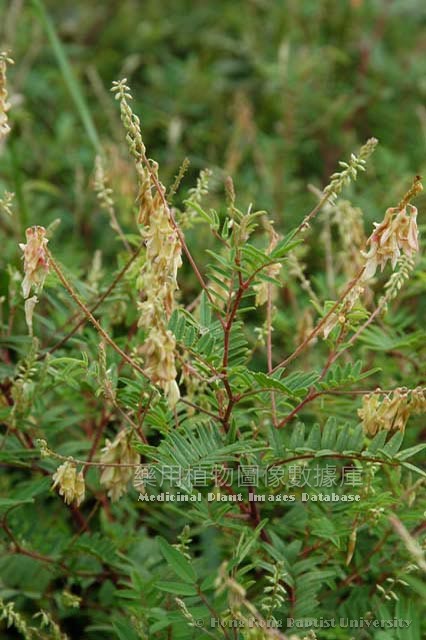|
Hedysarum polybotrys Hand.-Mazz.

|
English Name |
Manaraceme Sweetvetch, Manyinflorescenced Sweetvetch |
|
Latin name |
Hedysarum polybotrys Hand.-Mazz. |
|
Family & Genus |
Fabaceae, Hedysarum |
|
Description |
Perennial herb, up to 1.5m tall. Main root thick, deep and long, cylindrical, bark reddish brown, 10-50cm long, 1-2cm in width. Stem fasciculate, upright, branches plentiful; branch hairless, hard, slightly curved. Leaf alternate, 5-9cm long; petiole long; Singular palmately compound leaf, 15cm long; leaflet 7-25, petiole base expanding; lamina long circular ovate to ovate lanceolate, 1-3.5cm long, 5-11mm wide, tip round or blunt and round, usually with tines, basal part wedge shaped, entire, superiorly hairless, lower middle vein covered by long soft hairs; petiole lanceolate, basal part inosculate, usually sessile. Raceme axillary, 5-8cm long, flower 20-25, 12-14mm long, peduncle filamentous, 2-4mm long, covered by long soft hairs; bract drill shaped and lanceolate, covered by soft hairs, usually caducous; calyx inclined campanulate, 4-5mm long, covered by short hairs, most lower calyx tooth bigger and longer than other 4, calyx teeth triangular drill shaped; dish shaped corolla, light yellow, about 1cm long, vexil invert long ovate, tip round, slightly depressed, ala linear, carina 2-3mm longer than ala; stamens 10, 9 accrete, 1 separated, ovary narrow and long, with stipe, covered by short hairs. Pod flat, catenulate, with 3-5 nodes, loment nearly round or broadly ovate, margin with narrow wings, surface with sparse net veins and short soft hairs, each node with 1 elliptic seed. Flowering: June to August, fruiting: July to September. |
|
Distribution |
Growing in thickets, forest edges and stony slopes, etc. Distributed in Inner Mongolia, Gansu, Ningxia and West Sichuan. The medicinal materials are mainly produced in Gansu, Sichuan and etc. |
|
Part Used |
Medical part: roots. Chinese name: Hongqi. |
|
Harvest & Processing |
Excavated in spring and autumn, removed fibrous root and root tip, and sun-dried. |
|
Chemistry |
Roots contain HPS and inorganic elements, ect. |
|
Pharmacology |
Immunity-strengthening, anti-aging, lung-function-improving, anti-anoxia-capability strengthening, carbuncle-easing, sedative, anti-inflammatory and anti-pathogenic-microorganism. |
|
Properties & Actions |
Sweet, warm.Tonifying qi, strengthening exterior, inducing urination, detoxifying, curing wound, promoting tissue regeneration, discharging pus. Zhihongqi: reinforcing qi and tonifying middle-Jiao. |
|
Indications & Usage |
Deficiency of vital energy and debilitation, collapse of middle-warmer energy, anorexia and loose stools, anal prolapse due to long term diarrhea, spontaneous persipiration due to superficial asthenia, hemafecia, metrorrhagia and metrostaxis, edema due to deficiency of vital energy, hematasthenic flaccidity, feverish dysphoria and diabetes, albuminuria due to chronic nephritis, diabetes, persistent superficial infection.Oral administration: decocting, 9-30g. |
|
Examples |
It is used to treat anemia in modern medicine, irritable bowel syndrome, traumatic wounds, non functional uterine bleeding. |
| Link to |
 Chinese Medicinal Material Images Database Chinese Medicinal Material Images Database
 Chinese Medicine Specimen Database Chinese Medicine Specimen Database
|
|

